International Relations: June 2024 UPSC Current Affairs | UPSC Mains: International Relations PDF Download
| Table of contents |

|
| Indian Expatriate Community in Gulf Region |

|
| Biopharmaceutical Alliance |

|
| Expansion of BRICS |

|
| United Nations Global Supply Chain Forum |

|
| IPEF Ministerial Meeting 2024 |

|
Indian Expatriate Community in Gulf Region
Why in news?
Recently, a devastating fire broke out in an apartment building near Kuwait City, resulting in the tragic loss of at least 49 lives, with around 40 of the victims being Indian nationals.
- The apartment building housed over 195 workers, the majority of whom were Indian nationals hailing from the states of Kerala, Tamil Nadu, and various parts of northern India.
Current State of Workers in the Gulf Region
- Evolution of Indian community in Kuwait:
- 1990-1991 Gulf War led to a mass exodus of the Indian community from Kuwait. After Kuwait's liberation, most members of the Indian community gradually returned and became the largest expatriate community in Kuwait.
- Prior to the liberation war, the Palestinians constituted the largest expatriate community in Kuwait.
- "Kuwait's liberation" refers to the military operations in 1991 that resulted in the expulsion of Iraqi forces from Kuwait. This event marked the end of the Gulf War, when a coalition led by the United States launched a military campaign to free Kuwait from Iraqi occupation. The successful liberation of Kuwait restored the country's sovereignty and independence.
- Indians in Gulf Countries:
- As of 2021, there were approximately 8.9 million Indian migrants residing in the Gulf countries.
- 25% of overseas Indians and 56% of NRIs reside in 6 Gulf countries (UAE, Saudi Arabia, Kuwait, Qatar, Oman, and Bahrain).
- NRIs are individuals who hold Indian citizenship but live outside of India.
- Overseas Indians or Overseas Citizens of India (OCIs) are individuals from foreign countries with ancestral ties to India. They are not considered Indian citizens but are granted specific privileges akin to those of permanent residents in India.
- Of the total foreign inward remittances, 28.6% originated from the Gulf countries alone, accounting for 2.4% of these remittances.
- Trade Relations:
- The gulf region contributes to about one-sixth of India’s total trade.
- In FY 2022-23, India’s trade with GCC countries stood at around USD 184 billion, marking a 20% increase as compared to FY 2021-22.
- Partnership in Energy Cooperation:
- The Government of India has announced plans to develop a comprehensive relationship with the GCC countries in the area of energy cooperation. This will involve encouraging participation in India’s strategic petroleum reserves, negotiating long-term gas supply agreements, seeking concessions in oilfields, and collaborating on renewable energy projects.
Challenges Faced by Indian Diaspora and Migrants in Gulf Countries
- Kafala System:
- It is a practice of tying a migrant worker's visa to their employer (sponsor), prevalent in many Gulf countries. This creates a power imbalance and misery for workers, who face issues like confiscation of passports, difficulty changing jobs, and exploitation and abuse by their employer, leading to forced labor situations.
- Security Concerns:
- In 2014, during the insurgency in Iraq, 40 Indian construction workers were abducted and killed by the Islamic State of Iraq and Syria (ISIS), highlighting the potential security risks faced by Indian workers in volatile regions.
- Unsafe Working Conditions and Labor Exploitation:
- Migrant workers, particularly in construction and manual labor sectors, often face unsafe working environments with inadequate safety gear and protocols. This can lead to accidents, injuries, and even fatalities.
- In 2019, several Indian workers died due to heatstroke in the UAE, highlighting the dangers of working in extreme heat without proper precautions. They also face issues regarding non-payment of salaries, denial of overtime pay, and longer working hours.
- Limited Rights and Abuse:
- Indian expatriates are not granted citizenship or permanent residency in most Gulf countries, restricting their ability to own property, access social security benefits, and participate in political processes. Domestic workers are vulnerable to physical and psychological abuse by employers.
Measures taken by the Indian Government to Protect its Migrant Workers Abroad
- Bilateral Labour Agreements (BLAs):
- The government has signed BLAs with several countries to ensure the protection and welfare of Indian migrant workers. These agreements cover aspects like minimum wages, working conditions, repatriation, and dispute resolution.
- Pravasi Bharatiya Bima Yojana (PBBY):
- This is a mandatory insurance scheme that provides life and disability cover to all Emigration Check Required (ECR) category Indian migrant workers going abroad for employment. It provides coverage of up to Rs. 10 lakh in case of accidental death or permanent disability of Indian migrant workers abroad.
- Minimum Referral Wages (MRW):
- MRW has been set by the Indian Government for Indian migrant workers abroad in nations that do not have minimum wage laws. It ranges around USD 300 to 600, ensuring migrant workers from India receive a minimum salary in certain countries and prevents them from being exploited by employers offering much lower wages than the norm.
- eMigrate System:
- This is an online platform that streamlines the emigration process. It provides pre-departure orientation, registers job contracts, and tracks the status of migrant workers.
- Migrant Resource Centers:
- Set up in several states to provide information, counseling, and support services to prospective and returning migrant workers.
- Grievance Redressal Mechanisms:
- Platforms like the eMigrate system and the Overseas Workers Resource Centre allow migrant workers to file complaints and seek assistance from the government.
- Repatriation Assistance:
- In cases of distress or conflict, the Indian government provides repatriation assistance to Indian workers abroad, facilitating their safe return to India.
- Restrictions on Women's Emigration:
- Women below the age of 30 years are not granted emigrant clearance for employment as housemaid, domestic worker, hairdresser, beautician, dancer, stage artist, laborers, or general workers.
Biopharmaceutical Alliance
Recently, India, South Korea, the US, Japan, and the EU launched the Biopharmaceutical Alliance
Why in news?
The Biopharmaceutical Alliance was recently launched as a collaborative effort in response to the drug supply shortages that emerged during the Covid-19 pandemic. This significant initiative was announced during the inaugural meeting at the Bio International Convention 2024 in San Diego, California, recognized as the world's largest biopharmaceutical exhibition.
Significance of Biopharmaceutical Alliance
- Establishing a reliable, sustainable, and resilient supply chain within the biopharmaceutical sector.
- Coordinating the bio policies, regulations, and research and development support measures of the participating countries.
- Developing a detailed pharmaceutical supply chain map to reduce reliance on other nations, particularly China, where the production of essential raw materials and ingredients is concentrated.
Expansion of BRICS
Why in News?
Recently, foreign ministers held their first meeting since the BRICS was expanded to add Egypt, Iran, UAE, Saudi Arabia, and Ethiopia in 2023. They have joined the BRICS with effect from January 1, 2024.
What is BRICS?
About:
- BRICS is an acronym for the grouping of the world's leading emerging economies, namely Brazil, Russia, India, China, and South Africa.
- The BRICS Leaders' Summit is convened annually.
- The 15th BRICS Summit was hosted by South Africa in 2023, and Russia will host the 16th BRICS summit in October 2024.
Formation of BRICS:
- The grouping was first informally formed during a meeting of the leaders of Brazil, Russia, India, and China (BRIC) on the sidelines of the G8 (now G7) Outreach Summit in St.Petersburg, Russia, in 2006, this was later formalised during the 1st BRIC Foreign Ministers' Meeting in New York in 2006.
- In 2009, the inaugural BRIC summit took place in Yekaterinburg, Russia. The following year (2010), South Africa joined to form the group known as BRICS.
Significance:
- The group (enlarged) consists of approximately 3.5 billion people, representing 45% of the world's population.
- Collectively, the economies of its members exceed USD 28.5 trillion, accounting for around 28% of the global economy.
- Iran, Saudi Arabia, and UAE, as part of the grouping, collectively contribute to approximately 44% of the global crude oil production.
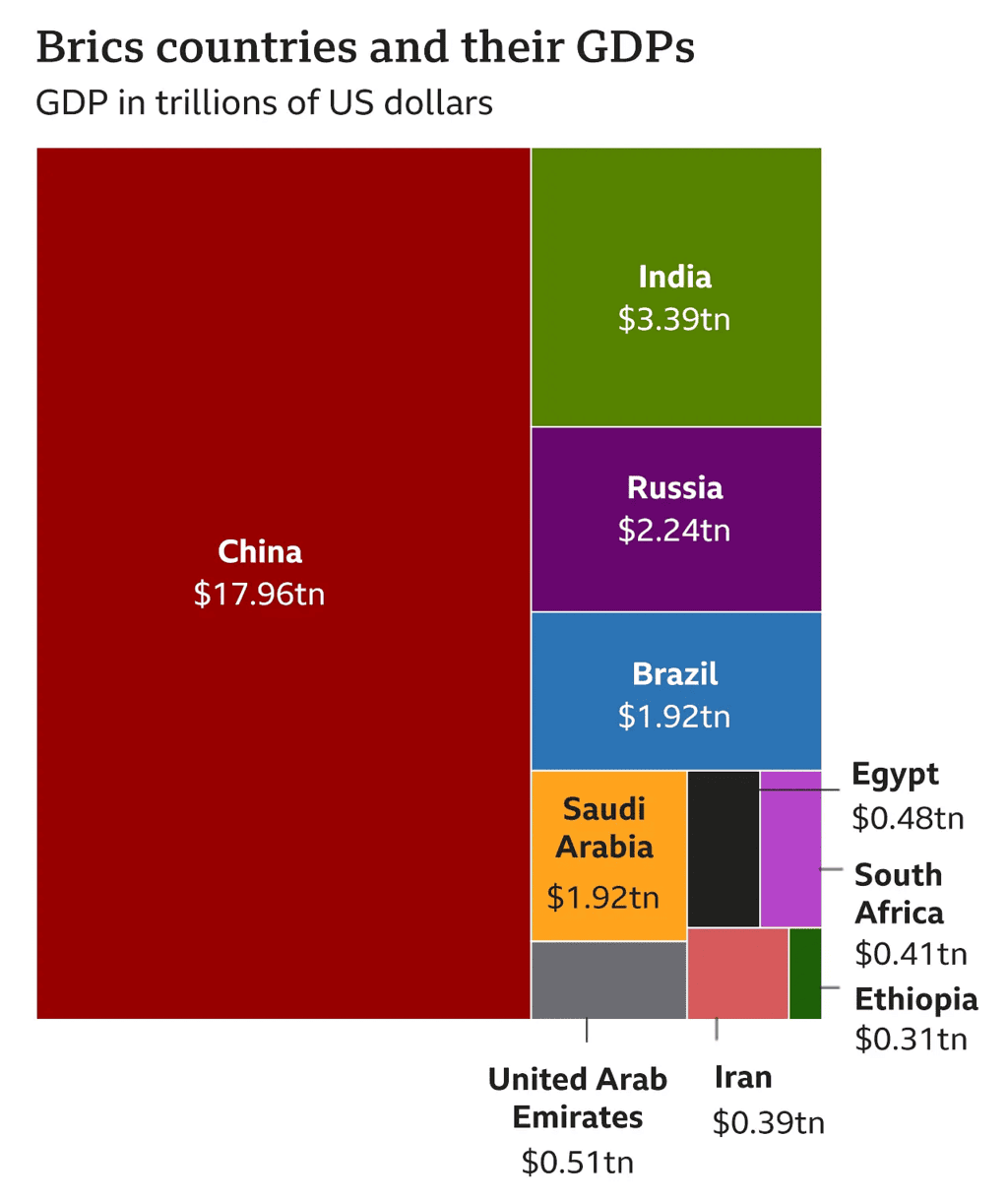
What is the Geopolitical Importance of the Recently Included BRICS Members?
- The inclusion of boosts BRICS access to significant energy reserves, with Saudi oil increasingly directed to China and India, and Iran expanding its oil exports to China despite sanctions, highlighting the importance of energy cooperation within BRICS.
- Russia's exploration of new markets within BRICS for its energy exports diversifies the group's energy supply, reducing Russia's reliance on traditional markets and bolstering the coalition's energy security.
- The strategic inclusion of Egypt and Ethiopia enhances BRICS' geopolitical significance by providing greater influence and access to the crucial maritime trade routes in the Horn of Africa and the Red Sea region.
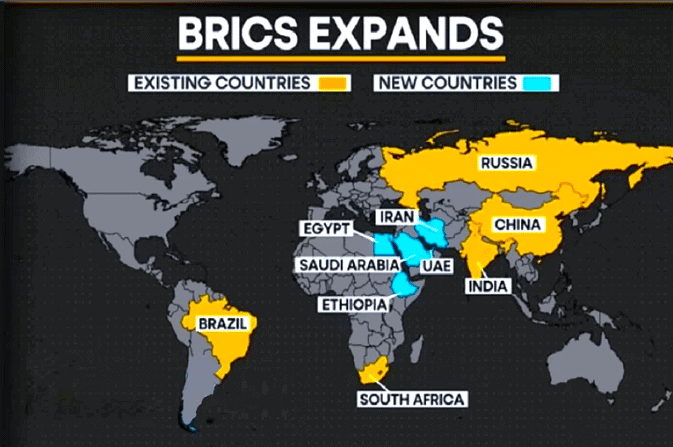
New Non-Permanent Members of UNSC
Why in news?
Recently, Pakistan, Somalia, Denmark, Greece, and Panama have been chosen as non-permanent members of the UN Security Council (UNSC), serving a 2-year term from 1 January 2025 to 31 December 2026.
How are the New Members Elected to the UNSC?
Election Process and Regional Groupings:
- The election process for non-permanent seats on the UNSC involves regional groups nominating candidates.
- There are four regional groups.
- The newly elected members are Somalia for the African Group, Pakistan for the Asia-Pacific Group, Panama for the Latin America and Caribbean Group, and Denmark and Greece for the Western European and Others Group.
- Each regional group typically agrees on candidates to present to the General Assembly for a two-year term.
- This process aims to ensure regional representation within the Security Council, reflecting global geopolitical diversity and interests.
Current and Incoming Members
- The new members will replace outgoing countries such as Mozambique, Japan, Ecuador, Malta, and Switzerland.
Role and Challenges of the Security Council
- The UN Security Council plays a critical role in maintaining international peace and security.
- However, its effectiveness can be hindered by the veto power of its permanent members.
What is the United Nations Security Council?
The United Nations Security Council, established under the UN Charter in 1945, constitutes one of the UN's six principal organs. It comprises 15 members (5 permanent (P5) and 10 non-permanent members).
- Out of the 10 non-permanent members, five are elected each year by the General Assembly are the United States, the Russian Federation, France, China, and the United Kingdom.
- According to Oppenheim's International Law: United Nations, "Permanent membership in the Security Council was granted to five states based on their importance in the aftermath of World War II."
- India's participation in the Security Council has been as a non-permanent member during the periods of 1950-51, 1967-68, 1972-73, 1977-78, 1984-85, 1991-92, 2011-12, and 2021-22.
Maitri Setu
Why in news?
The Maitri Setu, also known as the India-Bangladesh friendship bridge, is set to open by September, connecting India's landlocked Northeast to the Bay of Bengal.
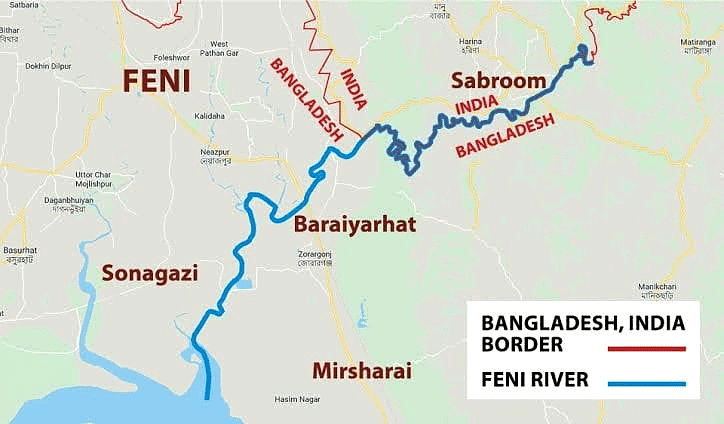
What are the Key Facts about the Maitri-Setu?
About:
- The bridge is 1.9 kilometres long and connects Sabroom in Tripura with Ramgarh in Bangladesh.
- Maitri Setu is constructed over the Feni River, which acts as a boundary between India (in Tripura) and Bangladesh.
- The name ‘Maitri Setu’ signifies the strengthening of bilateral relations and friendly ties between India and Bangladesh.
- It is a pre-stressed concrete bridge with a single-span structure that facilitates smooth traffic and cargo flow.
- The construction of the bridge has been supervised by the National Highways and Infrastructure Development Corporation Ltd. (NHIDCL).
NHIDCL is a government-owned company established in 2014 for the development & maintenance of National Highways & Strategic Roads of India. It operates as a nodal agency of the Ministry of Road Transport and Highways (MoRTH).
Significance:
- The bridge will play a central role in allowing India to transport goods from West Bengal to Northeast India through the Chittagong and Mongla Ports.
- Cargo movement through the bridge is strategically important as Bangladesh's Chittagong port is just 80km from Tripura's Sabroom.
- It would serve as a new trade corridor between the two countries, helping in the development of Northeastern states.
- It will also enhance people-to-people connect between India’s northeast and Bangladesh.
- Bangladesh is the biggest trade partner of India in South Asia and an integral part of India's Act East Policy.
- The completion of Maitri Setu bridge will strengthen India’s strategic ties as well as bilateral trade with Bangladesh.
- The new maritime route Kolkata to Chittagong will provide the quickest way for the movement of goods and an alternative to the Sittwe Port-Kaladan route.
United Nations Global Supply Chain Forum
Why in news?
The United Nations Global Supply Chain Forum 2024 was recently organized by UNCTAD and the Government of Barbados. The forum highlighted key issues such as climate change, geopolitical tensions, and their impact on global trade. One significant achievement was the launch of the UN Trade and Development Trade-and-Transport Dataset in collaboration with the World Bank.
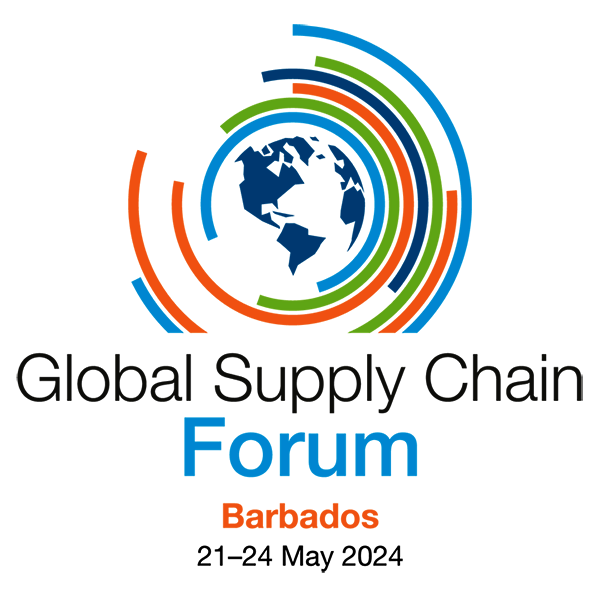
Global Supply Chain Forum
- About Global Supply Chain Forum: This platform brings together experts, policymakers, and industry leaders to discuss challenges related to global supply chains.
- India's Supply Resilience Initiative: Initiated in 2021 as a trilateral agreement to counter China's influence and promote a more balanced order, aligned with broader security discussions among Quad nations (India, Australia, Japan, United States).
- Recommendations: The forum aids in recommending policies to governments and organizations globally to enhance supply chain resilience and sustainability.
- Climate Change: Effects like extreme weather events disrupt transportation and logistics networks.
- Geopolitical Tensions: Political instability globally creates uncertainty, hindering international trade.
- COVID-19 Pandemic: Lingering effects continue to disrupt production, transportation, and labor markets.
- Sustainable Practices: Inclusive, sustainable production and distribution networks contribute to resilience.
- Decarbonization of Shipping: Focusing on decarbonizing global shipping, especially in countries with renewable energy resources.
- Investment in Green Technologies: International support required for green technologies in Small Island Developing States.
- Improved Connectivity: Investments in transport infrastructure to enhance efficiency.
- Digitalization: Utilizing technologies like blockchain for trade facilitation.
- Port Modernization: Upgrading ports for enhanced resilience.

- The global supply chain involves employees, information, resources, and tools for regulatory compliance, excluding R&D and marketing teams.
- The forum launched the "Manifesto for Intermodal, Low-Carbon, Efficient and Resilient Freight Transport and Logistics" and the UN Trade and Development Trade-and-Transport Dataset developed with the World Bank.
IPEF Ministerial Meeting 2024
Why in news?
Recently, India participated in the Indo-Pacific Economic Framework for Prosperity (IPEF) Ministerial Meeting, held in Singapore on 6 June 2024, showcasing the significant strides made in fostering economic engagement among partner countries in the Indo-Pacific region.
Key Highlights of the Meeting
- Clean Economy Agreement:
- Aims to accelerate efforts towards energy security, climate resilience, and reducing GHG emissions.
- India launched a collaborative effort called a "Cooperative Work Programme" focused on recovering valuable resources from electronic waste.
- IPEF Catalytic Capital Fund:
- Launched to support clean economy infrastructure projects in IPEF emerging and upper-middle-income economies.
- Founding supporters provided USD 33 million as an initial grant funding to catalyze USD 3.3 billion in private investment.
- Fair Economy Agreement:
- Aims to create a more transparent and predictable business environment, promote fair competition, and enhance efforts against corruption.
- India highlighted a training program in Digital Forensics & System-Driven Risk Analysis for other IPEF partners.
- IPEF Upskilling Initiative:
- Provides digital skills training, primarily to women and girls, in IPEF partner countries.
- Provided 10.9 million upskilling opportunities in the last 2 years, with 4 million in India.
IPEF Overview
- About:
- IPEF was launched on 23 May 2022 at Tokyo, Japan, comprising 14 countries.
- It aims to strengthen economic engagement and cooperation among partner countries with the goal of advancing growth, economic stability, and prosperity in the region.
- Members:
- Australia, Brunei, Fiji, India, Indonesia, Japan, South Korea, Malaysia, New Zealand, Philippines, Singapore, Thailand, United States, and Vietnam.
- These 14 IPEF partners represent 40% of global GDP and 28% of global goods and services trade.
- Pillars:
- The IPEF is built on 4 main pillars: fair and resilient trade, supply chain resilience, clean economy, and fair economy.
- India has joined Pillars II to IV of IPEF while having an observer status in Pillar I.
Pillars of IPEF
- Fair and Resilient Trade (Pillar I):
- Aims to promote economic growth, peace, and prosperity in the region.
- Supply-Chain Resilience (Pillar II):
- Seeks to make supply chains more resilient, robust, and well-integrated.
- Focuses on improving logistics, connectivity, and investments in critical sectors.
- Aims to enhance worker roles through upskilling and reskilling initiatives.
- Clean Economy (Pillar III):
- Aims to advance cooperation on clean energy and climate-friendly technologies.
- Focuses on research, development, commercialization, and deployment of clean energy.
- Encourages investment in climate-related projects in the Indo-Pacific region.
- Fair Economy (Pillar IV):
- Focuses on implementing effective tax measures.
- Highlights India's steps in improving legislative and administrative frameworks to combat corruption.
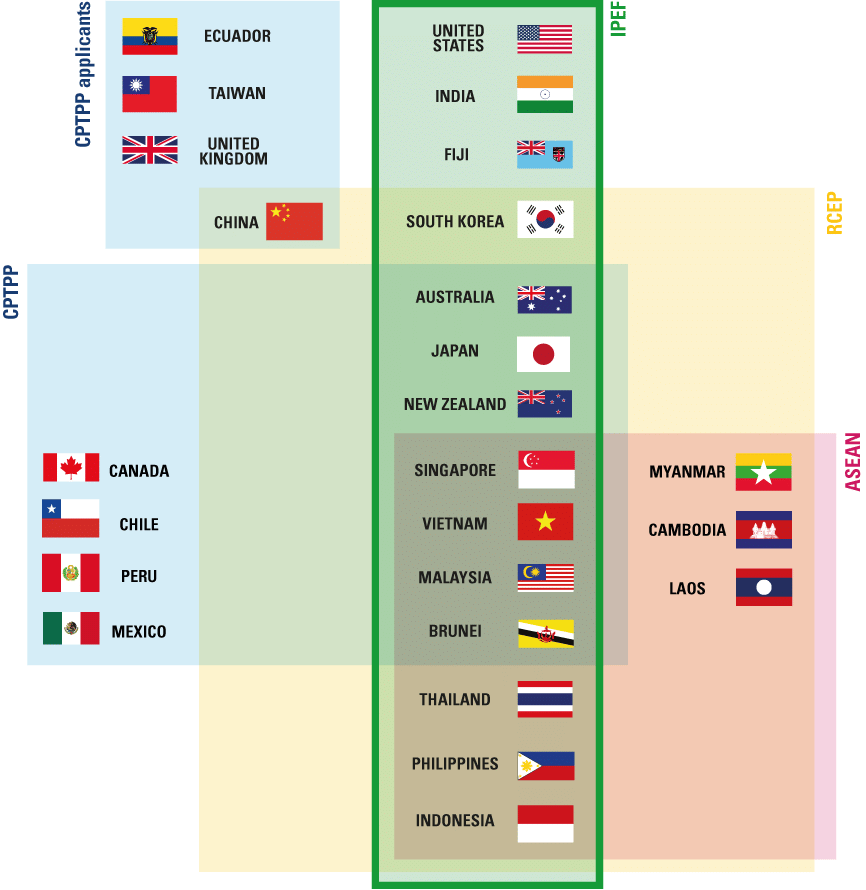 |
CPEC and Emerging Challenges at LAC
Why in news?
Following their co-chairing of the fifth Pakistan-China Foreign Ministers' Strategic Dialogue, the two leaders expressed their commitment to continue supporting each other on matters of core interest including the China-Pakistan Economic Corridor (CPEC). In a separate event, China has deployed advanced J-20 stealth fighters at a Tibetan airfield near the Line of Actual Control (LAC), as part of its strategy to bolster its military presence amid ongoing tensions.
What is the China-Pakistan Economic Corridor (CPEC)?
About:
- The CPEC is a major infrastructure and development project.
- With a USD 50 billion investment in Pakistan, CPEC forms a crucial part of China's Belt and Road Initiative aiming to establish a 3,000 km infrastructure link between Gwadar Karachi ports in Pakistan and China's Xinjiang Uygur Autonomous Region.
- China-Pakistan plans to accelerate various projects under CPEC, including the Gwadar Port development, and the Karakorum Highway.
- India opposes the CPEC as it passes through Pakistan-occupied Jammu and Kashmir (PoK) which is an integral part of India.
- Civilians in Pakistan's Balochistan province have also opposed the CPEC project, citing systematic abuses and suppression of basic freedoms.
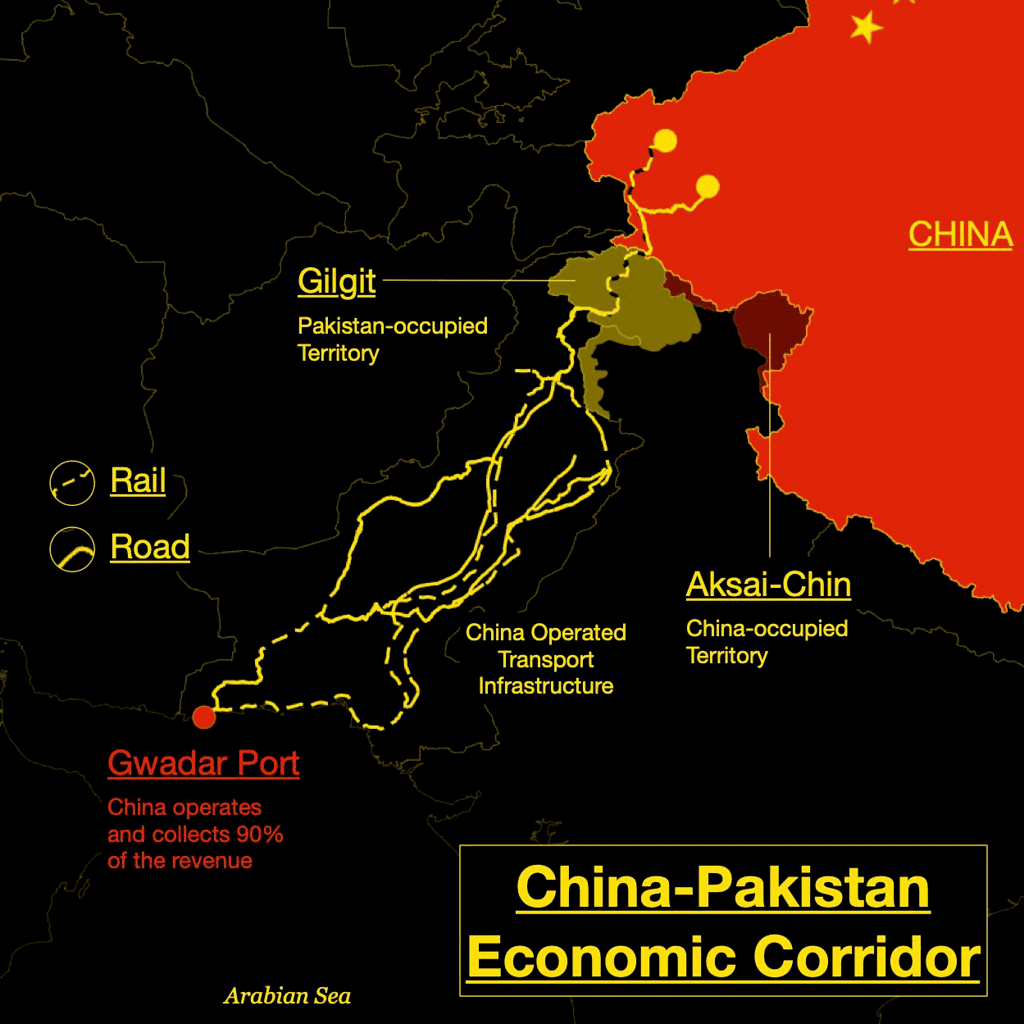
Zero-Draft of Pandemic Treaty
Why in news?
Recently, the World Health Organization's (WHO) has published a 'Zero-Draft' of the Pandemic Treaty, aiming to bring in Global and National-Level Pandemic Preparedness. The treaty aims to address the challenges posed by pandemics and other global health emergencies. The zero-draft of the pandemic treaty was established based on recognizing the catastrophic failure of the international community in showing solidarity and equity in response to the Covid-19 Pandemic.
What are the Principal Components of the Draft?
- Global Cooperation: It calls for increased global coordination and cooperation in the preparation for and response to pandemics.
- Strengthening of Health Systems: It emphasizes the need to strengthen health systems in all countries, particularly in low- and middle-income countries, to ensure they are better prepared to respond to pandemics and other global health emergencies.
- Investment in Research and Development: Improved access to essential health technologies, such as vaccines, diagnostics, and treatments, during pandemics and other global health emergencies. Increased investment in research and development of health technologies, particularly for diseases that pose a significant threat to global health.
- Transparency in Sharing of Information: Increased transparency and sharing of information about pandemics and other global health emergencies, including data on the spread of diseases and the effectiveness of interventions.
- Pathogen Access and Benefit-Sharing System: The constitution of a PABS under the WHO, making Genomic sequences of all pathogens with pandemic potential to be shared on an "equal footing" in the system.
- Addressing Gender Disparities: In addressing gender disparities in the healthcare workforce, the draft aims to "ensure meaningful representation, engagement, participation and empowerment of all health and care workers" by stressing equal pay and addressing barriers specific to women in taking leadership roles.
- International Health Regulations (IHR): It is an instrument of international law that is legally-binding on 196 countries including India. It aims for international collaboration to prevent, protect against, control, and provide a public health response to the international spread of disease.
- Lack of Access to Healthcare: Despite advances in medical technology, many populations around the world still lack access to basic healthcare services, particularly in low- and middle-income countries.
- Healthcare Infrastructure: Public health data and infrastructure are fragmented and lacking any global standard causing a major concern regarding quality and reliability of existing healthcare systems.
- Affordability and Disparity: Healthcare can be expensive, and many individuals, particularly those in low- and middle-income countries, struggle to afford basic healthcare services.
- Scarcity of Health Personnel: The healthcare sector faces shortages of trained and qualified health workers in many countries, particularly in low- and middle-income countries.
- Non-Communicable Diseases: Non-communicable diseases, such as heart disease, stroke, cancer, and diabetes, are becoming increasingly common and place a significant burden on healthcare systems.
|
88 videos|124 docs
|
FAQs on International Relations: June 2024 UPSC Current Affairs - UPSC Mains: International Relations
| 1. What is the current state of Indian expatriate community in the Gulf region? |  |
| 2. What are some challenges faced by Indian diaspora and migrants in Gulf countries? |  |
| 3. What measures has the Indian government taken to protect its migrant workers abroad? |  |
| 4. Why is the Biopharmaceutical Alliance significant for India and other participating countries? |  |
| 5. How are new non-permanent members elected to the UNSC and who are the current and incoming members? |  |




















